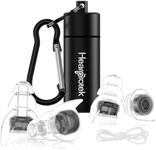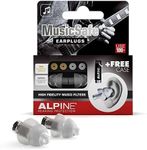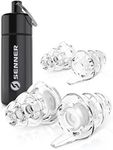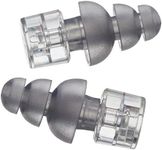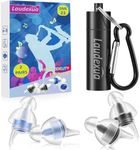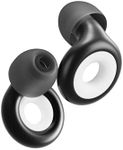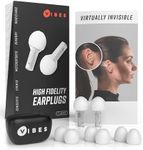Buying Guide for the Best Musician Earplugs
Choosing the right musician earplugs is crucial for protecting your hearing while ensuring you can still enjoy and perform music effectively. Unlike regular earplugs, musician earplugs are designed to reduce sound levels evenly across frequencies, preserving the quality of music and speech. When selecting earplugs, consider your specific needs, such as the type of music you play, the environments you perform in, and your personal comfort preferences. Understanding the key specifications will help you make an informed decision that balances protection with sound clarity.Noise Reduction Rating (NRR)The Noise Reduction Rating (NRR) indicates how much sound the earplugs can reduce, measured in decibels (dB). This is important because it helps you understand how much protection the earplugs will provide against loud sounds. NRR values typically range from 10 to 30 dB. Lower NRR values (10-15 dB) are suitable for environments where you need to hear more ambient sound, such as acoustic performances. Mid-range NRR values (15-20 dB) are ideal for general use in moderately loud environments. Higher NRR values (20-30 dB) are best for very loud settings, like rock concerts or when playing with amplified instruments. Choose an NRR based on the typical volume levels you encounter and your need for sound clarity.
Frequency ResponseFrequency response refers to how evenly the earplugs reduce sound across different frequencies. This is crucial for musicians because it affects how accurately you can hear music and speech. A flat frequency response means the earplugs reduce all frequencies equally, preserving the natural sound of music. Some earplugs may emphasize or de-emphasize certain frequencies, which can alter the sound quality. If you play in a band or orchestra, or if you are a vocalist, look for earplugs with a flat frequency response to maintain the integrity of the music. If you are a DJ or work in environments with heavy bass, you might prefer earplugs that slightly enhance lower frequencies.
Comfort and FitComfort and fit are essential for ensuring that you can wear the earplugs for extended periods without discomfort. This is important because ill-fitting earplugs can cause irritation and may not provide adequate protection. Earplugs come in various sizes and materials, such as silicone, foam, or custom-molded options. Silicone and foam are generally more affordable and offer a good fit for most people, while custom-molded earplugs provide the best fit and comfort but are more expensive. Consider how long you will be wearing the earplugs and whether you have any allergies or sensitivities to certain materials when choosing the right fit for you.
Durability and MaintenanceDurability and maintenance refer to how long the earplugs will last and how easy they are to clean. This is important because durable earplugs will save you money in the long run and ensure consistent performance. Reusable earplugs made from high-quality materials like silicone or custom molds tend to be more durable than disposable foam earplugs. They also require regular cleaning to maintain hygiene and performance. Consider how often you will use the earplugs and whether you are willing to clean them regularly. If you need earplugs for frequent use, investing in a durable, easy-to-maintain pair is advisable.
Portability and StoragePortability and storage refer to how easy it is to carry and store the earplugs when not in use. This is important for musicians who travel frequently or need to switch between different environments quickly. Many earplugs come with a carrying case or pouch, which helps protect them from damage and makes them easy to transport. Consider how often you will need to carry your earplugs and whether a compact, portable option is necessary for your lifestyle. If you are often on the go, look for earplugs that come with a sturdy case for convenience and protection.
